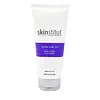What's inside
What's inside
 Key Ingredients
Key Ingredients

 Benefits
Benefits

 Concerns
Concerns

 Ingredients Side-by-side
Ingredients Side-by-side

Water
Skin ConditioningGlycerin
HumectantAmmonium Lauryl Sulfate
CleansingLactic Acid
BufferingDecyl Glucoside
CleansingSodium Hydroxide
BufferingXanthan Gum
EmulsifyingEthylhexylglycerin
Skin ConditioningCarrageenan
Panthenol
Skin ConditioningTocopherol
AntioxidantGlucose
HumectantPhenoxyethanol
PreservativeLycium Barbarum Fruit Extract
AstringentParfum
MaskingArginine
MaskingVinegar
Propylene Glycol
HumectantAlcohol
AntimicrobialRubus Idaeus Extract
Skin ProtectingAscophyllum Nodosum Extract
Skin ConditioningSodium Benzoate
MaskingCitric Acid
BufferingPotassium Sorbate
PreservativeWater, Glycerin, Ammonium Lauryl Sulfate, Lactic Acid, Decyl Glucoside, Sodium Hydroxide, Xanthan Gum, Ethylhexylglycerin, Carrageenan, Panthenol, Tocopherol, Glucose, Phenoxyethanol, Lycium Barbarum Fruit Extract, Parfum, Arginine, Vinegar, Propylene Glycol, Alcohol, Rubus Idaeus Extract, Ascophyllum Nodosum Extract, Sodium Benzoate, Citric Acid, Potassium Sorbate
Water
Skin ConditioningGlycolic Acid
BufferingSilica
AbrasiveAmmonium Lauryl Sulfate
CleansingSodium Hydroxide
BufferingHydrogenated Jojoba Oil
AbrasiveCaprylic/Capric Triglyceride
MaskingParaffin
PerfumingMagnesium Aluminum Silicate
AbsorbentGlyceryl Stearate
EmollientPanthenol
Skin ConditioningCetyl Alcohol
EmollientPEG-100 Stearate
Stearyl Alcohol
EmollientXanthan Gum
EmulsifyingMelaleuca Alternifolia Leaf Oil
AntioxidantSodium Hydroxymethylglycinate
PreservativeDisodium EDTA
Water, Glycolic Acid, Silica, Ammonium Lauryl Sulfate, Sodium Hydroxide, Hydrogenated Jojoba Oil, Caprylic/Capric Triglyceride, Paraffin, Magnesium Aluminum Silicate, Glyceryl Stearate, Panthenol, Cetyl Alcohol, PEG-100 Stearate, Stearyl Alcohol, Xanthan Gum, Melaleuca Alternifolia Leaf Oil, Sodium Hydroxymethylglycinate, Disodium EDTA
Ingredients Explained
These ingredients are found in both products.
Ingredients higher up in an ingredient list are typically present in a larger amount.
Ammonium Lauryl Sulfate is a type of sulfate. It can be bad for dry skin, be bad for oily skin, and cause irritation.
Panthenol is a common ingredient that helps hydrate and soothe the skin. It is found naturally in our skin and hair.
There are two forms of panthenol: D and L.
D-panthenol is also known as dexpanthenol. Most cosmetics use dexpanthenol or a mixture of D and L-panthenol.
Panthenol is famous due to its ability to go deeper into the skin's layers. Using this ingredient has numerous pros (and no cons):
Like hyaluronic acid, panthenol is a humectant. Humectants are able to bind and hold large amounts of water to keep skin hydrated.
This ingredient works well for wound healing. It works by increasing tissue in the wound and helps close open wounds.
Once oxidized, panthenol converts to pantothenic acid. Panthothenic acid is found in all living cells.
This ingredient is also referred to as pro-vitamin B5.
Learn more about PanthenolSodium Hydroxide is also known as lye or caustic soda. It is used to adjust the pH of products; many ingredients require a specific pH to be effective.
In small amounts, sodium hydroxide is considered safe to use. However, large amounts may cause chemical burns due to its high alkaline.
Your skin has a natural pH and acid mantle. This acid mantle helps prevent harmful bacteria from breaking through. The acid mantle also helps keep your skin hydrated.
"Alkaline" refers to a high pH level. A low pH level would be considered acidic.
Learn more about Sodium HydroxideWater. It's the most common cosmetic ingredient of all. You'll usually see it at the top of ingredient lists, meaning that it makes up the largest part of the product.
So why is it so popular? Water most often acts as a solvent - this means that it helps dissolve other ingredients into the formulation.
You'll also recognize water as that liquid we all need to stay alive. If you see this, drink a glass of water. Stay hydrated!
Learn more about WaterXanthan gum is used as a stabilizer and thickener within cosmetic products. It helps give products a sticky, thick feeling - preventing them from being too runny.
On the technical side of things, xanthan gum is a polysaccharide - a combination consisting of multiple sugar molecules bonded together.
Xanthan gum is a pretty common and great ingredient. It is a natural, non-toxic, non-irritating ingredient that is also commonly used in food products.
Learn more about Xanthan Gum